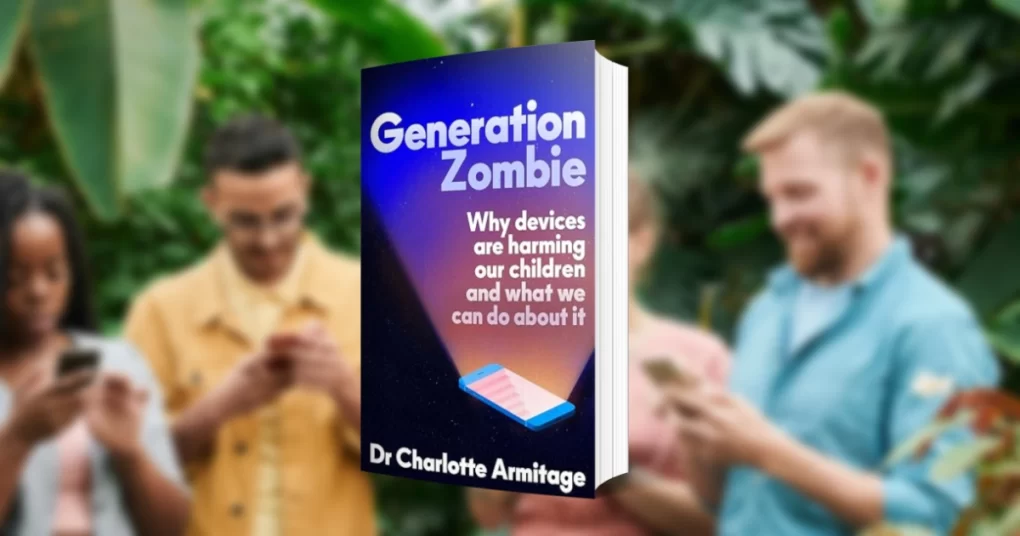Generation Zombie: Why devices are harming our children and what we can do about it
Charlotte Armitage
Hodder and Stoughton
2025
262 pages
ISBN: 978-1399742993
This book is an absolute must-read for anyone who has concerns for the next generation, be they parent, teacher, or indeed anyone with the good of young children at heart. While rejoicing in the benefits of devices such as mobile phones, and indeed their ability to transform our lives for the better, the author highlights ways in which devices are causing enormous damage to children’s development and to parent-child relationships.
The author is a UK-based psychotherapist and duty of care psychologist, and significantly, the parent of a teenage daughter. She has observed the impact of screen time on thousands of her clients and their families. She doesn’t deal with some of the widely reported dangers to children online, such as bullying, pornography, or toxic masculinity, as the recent Netflix drama Adolescents does, as these are more widely known about, but concentrates on the problems caused by the devices themselves and what they are doing to children and families.
And she starts with parents – how their children, in so many cases, are merely copying their parents’ behaviour. Indeed, she examines it from a scientific point of view – how we get a dopamine hit when we hear the ping of our device telling us there’s something or someone there and, ergo, that we’re valued.
Chapter One paints a picture of how, due to advances in algorithms and apps, device use has the power to impact so much of our day in ways unimaginable at the turn of the twenty-first century. The pictures she paints of parents’ and young people’s lives being dominated by devices are absolutely frightening. And the younger a child is when given a smartphone, the greater the likelihood of serious addiction and stunted emotional and intellectual growth.
The book has several chapters on how devices impact all stages of children’s growth – from the early years, the toddler stage, what she calls the “Tween,” and then the teenage years – illustrating how and why children are impacted at all stages by devices. There are a number of case studies that paint a chilling picture of how early exposure to device use can have devastating effects not only on parent-child relationships but even on the mental health of the child. She even presents a case study suggesting that unborn babies are affected by their mothers’ addiction to devices. And of course, the designers of the devices use algorithms that are becoming increasingly more powerful at responding to the wants, desires, and problems of the device owner, whatever their age. At the end of the chapters, there are suggested key lessons – just to prevent the reader from being overwhelmed by either the pictures she paints or by their own experiences.
But there is hope. The author suggests ways of stopping the negative cycle, and this is where parents of younger children will find the book most helpful. She rounds it off with a suggested 30-step Device Management Plan, suggesting that even if not all the steps are adhered to all of the time, great progress can be made in reducing addiction. Among these are discussing device use with the children in an ongoing way, turning off notifications, taking breaks from social media, allowing no devices in the bedroom or before breakfast time, and insisting on no devices while out for meals, among others.
Since this book was published in late 2024, the owner of X, formerly Twitter, has become even more powerful and has been using his platform in ways that are unprecedented – who knows what the next few years will bring? In another move that will likely result in more misinformation and disinformation, the CEO of Meta (formerly Facebook) has announced that the company will no longer be fact-checking material. So anything goes?
Reasons to be (even more) fearful for the future our children and grandchildren will have to navigate!
About the Author: Pat Hanratty
Pat Hanratty taught Science/Chemistry in Tallaght Community School from its inception in 1972 until he retired in 2010. He was the school’s first Transition Year Co-ordinator and for four years he had the role of Home School Community Liaison Officer.

